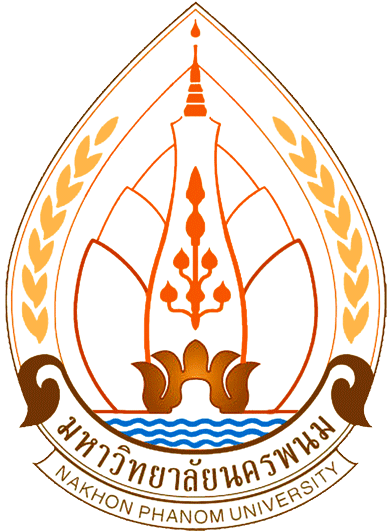Investigation of SNP molecular markers in the sucrose synthesis genes of sugarcane using Restriction Site Associated DNA Sequencing (RAD-seq)
Main Article Content
Abstract
At present, Breeding sugarcane varieties to achieve good and desirable characteristics has not been as successful as it should be, for the most part, sugarcane breeding still uses conventional breeding methods in which the breeders with the desired characteristics are mixed. Using the external appearance, it takes a long period for the selection of sugarcane varieties that have characteristics that are suitable for agricultural use for farmers. Single-nucleotide polymorphism (SNP) marker is important resources for marker-assisted selection by Restriction site Associated DNA Sequencing (RAD-Seq). The molecular markers can be used to determine species identity, Detection the hybrid varieties and Classification the related species. Here, we performed restriction-site-associated DNA sequencing (RAD-seq.) on 16 sugarcane varieties such as UT17 LK92-11 KK07-250 KK09-0857 UT15 KK09-0939 K88-92 KK07-599 KK08-059 DOA-NS1 KK09-0941 DOA-KK3 DOA-KK4 KK07-037 KK09-0844 and Si Samrong1 which were collected at Khon Kaen Field Crops Research Center (KKFCRC). An average of 1.9 million SNPs and 23,000 INDELs were identified from each individual.Then, we constructed the maximum likelihood phylogenetic tree based on SNPs data and revealed that the grouping is in association with the sugar content levels or commercially extractable sucrose (C.C.S.) content of sugarcane varieties in group 1 were of 9-12 and group 2 were 13-15. In addition to the results of sucrose synthesis genes clustering, implicating the remarkable effectiveness and potential applications in genetic analysis and breeding techniques for sugarcane varieties and other agricultural crops.
Article Details

This work is licensed under a Creative Commons Attribution-NonCommercial-NoDerivatives 4.0 International License.
บทความลิขสิทธิ์ที่ได้รับการตรีพิมพ์เป็นลิขสิทธิ์ของวารสารเกษตรอนุภาคภูมิภาคลุ่มน้ำโขง คณะเกษตรและเทคโนโลยี มหาวิทยาลัยนครพนม
References
ณัฐภัทร พงศ์ศิริพัฒน์ และกิตติพัฒน์ อุโฆษกิจ. (2559). การพัฒนาเครื่องหมาย ILPจากยีนที่มีความเกี่ยวข้องกับการ
สังเคราะห์น้ำตาลซูโครสในอ้อยและการศึกษาโครงสร้างพันธุกรรมอ้อย. วารสารทางวิชาการสมาคมพันธุศาสตร์
แห่งประเทศไทย. 8(2): 111–122.
เรวัต เลิศฤทัยโยธิน, อภิวิชญ ทรงกระสินธุ์ พัชรวัลย สวางศิลป์, ชลิดา เข็มมา, วันดี หนูน้อย, วิชา ฮวดหนองโพธิ์,
อัมรา บุญเจือ, ปิยะธิดา อินทรสุข, จิราพรรณ สุขชิต, อดิศักดิ์ นัดกระโทก, พุทธพร วิวาจารย, ธนูเดช ฤกษปราณี, ยศพร ตันสมรส, กฤษณ เขียวสะอาด และขนิษฐา สำราญใจ. (2551). การปรับปรุงพันธุ์อ้อยด้วยวิธี conventional method. มหาวิทยาลัยเกษตรศาสตร. กรุงเทพฯ. หน้า 1-211.
สำนักงานคณะกรมการอ้อยแลน้ำตาลทราย. (2558). เทคนิคการปรับปรุงพันธุ์อ้อย. แหล่งที่มาhttp://km.ocsb.go.th/
uploads/หนังสือ%20การปรับปรุงพันธ์อ้อย.pdf [เข้าถึงเมื่อ 5 มิถุนายน 2565].
สำนักงานคณะกรรมการอ้อยและน้ำตาลทราย. 2566ก. โครงการพัฒนาและส่งเสริมอุตสาหกรรมชีวภาพ (Bioeconomy
Non Food). รายงานฉบับสมบูรณ์ (Final Report). แหล่งข้อมูล: https://w2.ocsb.go.th/wpcontent/
uploads/2023/04/14244-4316.pdf. สืบค้นเมื่อ 30 มกรคม 2568.
Baird, N.A., Etter, P.D, Atwood, T.S., Currey, M.C., Shiver, A.L., Lewis, Z.A., Selker, E.U., Cresko, W.A. and
Johnson, E.A. (2008). Rapid SNP discovery and genetic mapping using sequenced RAD markers.
Journal of PLoS ONE. 3(10): 1–7.
Cumer, T., Pouchon, C., Boyer, F., Yannic, G., Rioux, D., Bonin, A. and Capblancq, T. (2021). Double-digest
RAD-sequencing: do pre- and post-sequencing protocol parameters impact biological results.
Journal of Molecular Genetics and Genomics 296(2): 457-471.
Langmead B. and S. Salzberg. (2012) Fast gapped-read alignment with Bowtie 2. Journal of Nature
Methods., 9:357-359.
Li, H., Handsaker, B., Wysoker, A., Fennell, T., Ruan, J., Homer, N. and R. Durbin. (2009). The sequence
alignment/map format and SAMtools. Bioinformatics 25(16), 2078-2079.
Lo, Y.T. and Shaw, P.C. (2019). Application of next-generation sequencing for the identification of herbal
products. Biotechnology Advances. 37(8): 107450.
McCormick, A.J. and M.D. Cramer, and D.A. Watt. (2008). Differential expressions of genes in the leaves of
sugarcane in response to sugar accumulation. Journal of Tropical Plant Biology. 1: 142-158.
Papini-Terzi, F.S., Rocha, F.R., Vencio, R.Z., Felix, J.M., Branco, D.S., Waclawovsky, A.J., Del Bem, L.E.,
Lembke, C.G., Costa, M.D., Nishiyama Jr, M.Y., Vicentini, R., Vincentz, M.G., Ulian, E.C., Menossi, M.
and G.M. Souza. (2009). Sugarcane genes associated with sucrose content. BMC Genomics 10: 120–141.
Ren, J. L., Geng, Z. C., Liu, C. F., Xu, F., Sun, J. X., and R. C. Sun. (2006). Fractional isolation and structural characterization of hemicellulosic polymers from delignified and ultrasonic irradiated sugarcane
bagasse. Journal of E-Polymers. 67:1-12.
Severn-Ellis, A.A., Scheben, A., Neik, T.X., Saad, N.S.M., Pradhan, A. and Batley, J. (2020). Genotyping for
species identification and diversity assessment using double digest restriction site-associated DNA sequencing (ddRAD-Seq). methods. Journal of Molecular Biology. 2017: 159-187.
Song J, Yang X, Resende MF Jr, Neves LG, Todd J, Zhang J, Comstock J, Wang J. (2016). Natural alleviation variations in highly polyploid Saccharum Complex. Frontiers in Plant Science.7:804.
Tai, T.H. and S.D. Tanksley. (1990). A rapid and inexpensive method for isolation of total DNA from
dehydrated plant tissue. Plant Molecular Biology Reporter 8: 297-303.
Ukoskit, K., Thipmongkolcharoen, P. and Chatwachirawong, P. (2012). Novel expressed sequence tag-
simple sequence repeats (EST-SSR) markers characterized by new bioinformatic criteria reveal high genetic similarity in sugarcane (Saccharum spp.) breeding lines. African Journal of Biotechnology 11: 1337–1363.
Vettore, A.L., Silva, F.R.D., Kemper, E.L., Souza, G.M., Silva, A.M.D., Ferro, M.I.T., Henrique-Silva F, Giglioti,
E.A., Lemos, M.V.F & L.L. Coutinho. (2003). Analysis and functional annotation of an expressed
sequence tag collection for tropical crop sugarcane. Journal of Genome Research 13: 2725–2735.
Yang, Y., Zhao, X.L., Xia, L.Q., Chen, X.M., Xia, X.C., Yu, Z., He, Z.H. & M. Roder. (2007). Development
and validation of a Viviparous-1 STS marker for preharvest sprouting tolerance in Chinese wheats.
Journal of Theoretical and Applied Genetics 115: 971–980.


